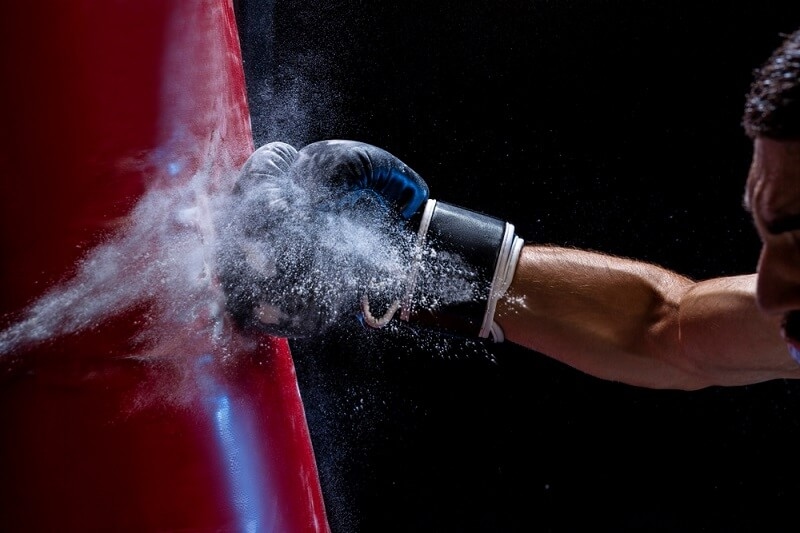Punching Power Boost: Exercises to Hit Harder & Faster

Fitness / Jul 11,2025
Want to throw punches that make your opponent think twice before stepping in again? Then forget the fluff. Punching power isn’t some mystical gift reserved for the naturally strong. It’s built—deliberately, methodically, and explosively.
In the ring, raw aggression means nothing without the force to back it. Whether you're throwing jabs, hooks, or that fight-ending cross, true punching power demands more than just muscle. It’s a full-body equation—legs, hips, core, shoulders, timing, and intent—all syncing in one violent burst. In 2025, training to hit harder isn’t about guesswork. It’s a science. From smart strength training to speed-based drills, every serious fighter needs a system that turns their body into a weapon
5 Proven Steps to Boost Punching Power in 2025
If you’re serious about learning how to increase punching power in 2025, this is your blueprint.
Step 1: Build from the Ground Up
Most fighters think power starts with the arms. It doesn’t. The real force comes from your legs and core. If your base is weak, your punch is already compromised.
To improve punch strength, prioritize lower-body and rotational core work. Think squats, deadlifts, leg-driven plyometrics, and core-focused movements that mimic punching mechanics.
Punching power exercises to start with:
- Barbell back squats
- Jump squats or weighted box jumps
- Russian twists with a medicine ball
- Dead bugs and hanging leg raises
A strong base gives you stability and lets you generate serious force through your hips and torso. That’s where knockout power starts.
Add to that the ability to generate torque through your midsection, and you’ve got the beginnings of a real power engine. Don’t underestimate how much rotational strength impacts your ability to throw powerful hooks and crosses. Incorporate explosive movements that force you to rotate under pressure.
Must read: The Unwritten Rules Of Boxing Gym Etiquette You Should Know
Step 2: Train for Speed + Intent
Strength without speed is slow. And slow punches don’t do damage. That’s why every punch needs to be thrown with bad intentions and ballistic speed.
This is where plyometrics and reaction training come in. They help increase punching speed by teaching your nervous system to fire quickly and efficiently.
Use these punching power exercises to build speed:
- Clap push-ups
- Resistance band straight punches
- Reaction ball drills
- Speed bag intervals
You're not just moving fast—you’re teaching your body to deliver maximum force in minimum time. That’s the edge that separates a heavy hitter from a volume puncher.
Add contrast sets to your training. Pair a heavy movement like a push press with a fast one like medicine ball chest throws. This teaches your muscles to switch from tension to explosion, which mirrors real fight situations.
Also, never sleep on intent. Speed without purpose is just wasted energy. You need to throw every shot like it’s meant to finish the round. Train your mind and body to think "kill switch" every time you punch.
Step 3: Get Real With Heavy Bag Work

You can lift weights all day, but if you’re not applying that strength to real punches, it’s pointless. Heavy bag training is where power gets refined. This is pure boxer power training. No shortcuts.
To improve punch strength and increase punching power, focus on short explosive rounds. Go for all-out bursts where every shot is meant to hurt. And don’t just throw straight shots—add hooks, uppercuts, and overhands.
Your heavy bag game plan:
- 3 rounds x 1 min of power punching intervals (15s light taps / 15s bombs)
- 3 rounds focusing on specific punch types (e.g., left hooks only)
- Add movement: pivot, slip, step-in, throw
This is how boxers hardwire force into every strike. Controlled violence with intent.
And here’s the part most people skip—reviewing your bag rounds. Film them. Watch your hip rotation, weight transfer, and recoil. Are you snapping back into stance after each shot, or are your punches leaking energy? Break it down frame by frame and refine your technique under pressure.
Step 4: Max Out Without Bulking Up
Contrary to outdated gym myths, lifting heavy won’t make you slow—training wrong will. The smartest boxers in 2025 are using optimized strength programs to drive explosive force without adding deadweight.
You want maximum strength with minimum fluff. That’s how you boost punching power without compromising speed.
Boxer power training essentials:
- Low-rep, high-load barbell work (bench, squat, power cleans)
- Use velocity-based tracking tools to maintain explosive output
- Pair heavy lifts with speed work (e.g., heavy squats + jump squats)
The key here is programming. Periodize your strength phases. Don’t lift randomly. Have purpose. Use that strength to fuel more devastating punches.
Start with a 3-week max strength cycle, followed by a 3-week power development block. During strength weeks, go heavy and rest more. During power weeks, lighten the load and move faster. Mix in isometrics and eccentric training to break through plateaus.
And yes, track bar speed if possible. Velocity-based training gives real-time feedback and stops you from going through the motions. Intent is everything.
Step 5: Perfect the Delivery System
Let’s be clear: no amount of muscle or gym time will fix sloppy technique. If your body isn’t lined up to transfer force, you’re just shadowboxing with your potential.
To truly increase punching power, you need to master how your body moves as a unit. Punching power lives in timing, torque, and the ability to transfer weight with precision.
Fix your form. Own your mechanics:
- Practice step-in jabs and power crosses with full-body engagement
- Drill pivot hooks until your hips fire automatically
- Use mirror work and slow motion to analyze mechanics
If your punch ends with your arm, you’re missing the point. A real punch starts with your feet, rolls through your core, and lands like a hammer. Film your shadowboxing. Slow it down. Spot inefficiencies. Then drill until your mechanics are automatic.
Footwork also deserves more attention. Great punching power requires balance and control. Work on lateral movement, step-ins, and pivots. Stay grounded, stay mobile.
You may like: Basic Boxing Techniques For The Beginners: Fight Like A Pro!
Punching Power Isn’t Optional—It’s a Weapon
Whether you're an amateur in the ring or a street-trained scrapper, punching power sets the tone. It ends fights. It earns respect. And it doesn’t come by accident.
Use these five proven steps to upgrade your power game:
- Build a rock-solid lower body and core.
- Train explosive speed into every punch.
- Get gritty with the heavy bag.
- Use smart strength training to fuel force.
- Refine your mechanics until you punch like a machine.
And keep this in mind—punching power isn’t just about throwing harder. It’s about throwing smarter. When you fuse strength, speed, and precision, you don’t just hit—you hit different.
Make 2025 the year your punches speak louder than words. Stay sharp. Stay focused. And hit like you mean it.

